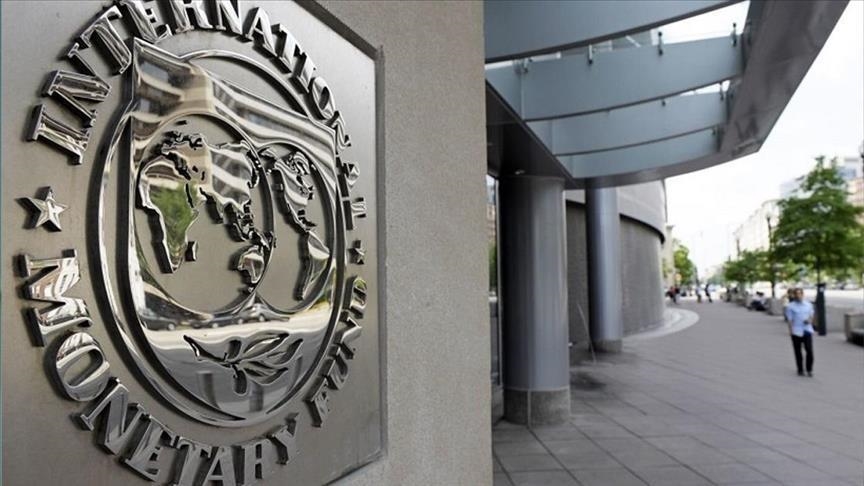The International Monetary Fund expects a surge in the growth of economies in the Middle East and North Africa in 2025

In a positive shift in economic forecasts, the International Monetary Fund raised its growth expectations for the economies of the Middle East and North Africa to 3.3% for 2025, improving its previous forecast of only 2.6% last May. The Fund attributed this adjustment to the "notable resilience" demonstrated by the region in the face of global uncertainty, despite ongoing geopolitical risks and inflationary pressures.
This announcement came during the launch of the "Regional Economic Outlook" report in Dubai, where the Fund also predicted a slowdown in the pace of inflation in the region, expecting it to decrease to 10.3% in 2026 after reaching 12.2% in 2025, compared to 14.2% in 2024.
According to the report, this improvement is due to positive performance from both poles of the regional economy. On one hand, oil-exporting countries benefit from increased production and higher public investments, along with implementing structural reforms that support economic diversification paths. On the other hand, the decline in commodity prices, the recovery of the tourism sector, and the rise in remittances from expatriate workers have supported the growth of oil-importing countries, where improved access to financial markets and declining inflation rates provided additional support.
Despite this positive outlook, the Fund warned that the landscape remains fraught with risks. Jihad Azour, Director of the Middle East Department at the Fund, stated in remarks from Dubai that "these developments come in a context that still features a high degree of uncertainty, with risks leaning towards the negative side".
Among the risks identified in the report is the possibility of a further decline in oil prices if global demand decreases, escalating international trade tensions, and rising global inflation rates, noting that the region has been "less affected by them compared to other areas". Regarding geopolitical tensions, Azour commented: "Geopolitical tensions have shown signs of improvement in recent weeks, but caution remains necessary".
Growth forecasts for Egypt have shown significant improvement, with the Fund raising its forecast for Egyptian economic growth in 2025 to 4.3%, compared to a previous estimate of 3.8%. This improvement was supported by increased tourism revenues and higher remittances from Egyptians working abroad. The Egyptian economy also saw a significant decline in the inflation rate to 11.7% in September, down from nearly 40% in 2023, aided by the $8 billion financial rescue program launched by the Fund in March 2024.
Azour urged the Egyptian authorities to "accelerate the implementation of two essential phases, namely the government offerings program and increasing the level of transparency in some state-owned enterprises". He added that discussions regarding the fifth and sixth reviews of the loan program are still ongoing, with completion expected in the last quarter of this year.
In the Gulf region, forecasts are leaning towards steady growth. The Saudi economy is expected to grow by about 2.7% in 2025, driven by a gradual increase in oil production and improved performance in non-oil sectors, particularly tourism, services, and construction, with inflation expected to stabilize at moderate levels around 2.3%.
In the UAE, the Fund expects growth of about 4% during 2025, supported by a recovery in private investment, strong growth in the trade, tourism, and real estate sectors, along with the continued implementation of economic diversification plans. Meanwhile, the Qatari economy is likely to achieve growth of 2.5% next year, driven by increased production of liquefied natural gas and expansion of investments related to the energy sector.
The Fund also expects growth in Kuwait of about 2.6% in 2025, with oil production returning to pre-cut levels and improved government spending. In Oman, forecasts indicate growth of 2.9% in 2025, supported by increased investments in renewable energy projects and financial reforms. Meanwhile, the Bahraini economy is expected to record growth of 3.2% during 2025, supported by non-oil sectors, especially tourism and financial services.
The report noted that financial surpluses in Gulf countries will gradually decline with falling oil prices compared to their peak in 2022, yet public financial positions and foreign reserves remain strong, providing governments with room to continue growth-supporting spending.
The Fund also emphasized that Gulf countries "are steadily progressing in diversifying their economies and reducing their dependence on oil revenues", through investments in renewable energy sectors, tourism, and advanced technologies, enhancing their ability to withstand future external shocks.
It is worth noting that since 2020, the Fund has approved financing of $55.7 billion for countries in the region, of which $21.4 billion was approved since the beginning of 2024 for programs in Egypt, Jordan, Morocco, and Pakistan.